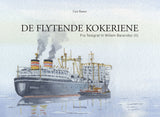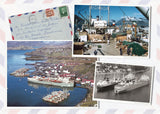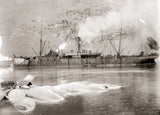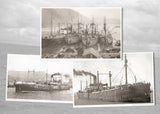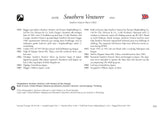Røsset, Geir: De flytende kokeriene/Whale Oil Factory Ships
Fra Telegraf til Willem Barendsz (II)
Denne boken viser med tekst og bilder utviklingen av hvalkokeriene fra de første dampskipene ble ombygget like etter 1900. Den viser hvordan det i mange år fortsatt også ble brukt seilskip, og hvordan skipene gradvis ble større og bedre utrustet. Gradvis ble de til «flytende fabrikker».
Så å si alt som kunne gjøres på en landstasjon knyttet til opparbeiding, utkoking av olje i ulike kvaliteter og produksjon av såkalte biprodukter (blant annet hvalmel av ulikt slag) ble komprimert og installert om bord. Den tekniske utviklingen gjorde skipene helt uavhengig av landbaser, fangsten ble «pelagisk» og kunne foregå utenfor ulike lands territorialfarvann. Før noen forvaltningsregimer var etablert førte dette særlig i Sørishavet til en enorm ekspansjon i fangsten.
This book shows, through text and images, the development of the factory ships, starting with the conversions of the first steam ships soon after 1900. It shows how for some years sailing ships continued to be used, but how the vessels gradually became larger and better equipped, and truly became ‘floating factories’. By redesigning and making the machinery more compact, virtually everything that could be done at a shore-station, including milling, rendering oil of different qualities, and the production of ‘by-products’, including whale-meal of different kinds, could be done on board. The technological development made the ships wholly independent of land, whaling became pelagic and could be carried out beyond the territorial waters of any country. This led to an enormous expansion in the catch, particularly in the Southern Ocean.
ISBN 978-82-7099-735-0, 271 sider/pp., innbundet/hardcover
Format: 21,5x30 cm, vekt/weight 1,5 kg, publiseringsår/year of publication: 2013
språk/language: norsk/English








